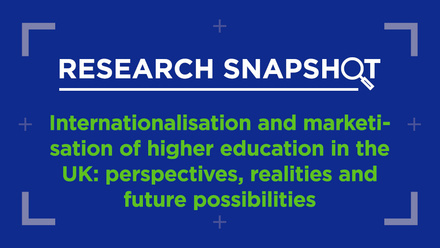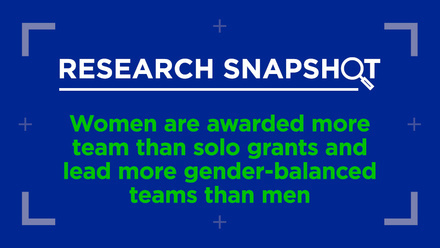4 steps for creating sustainable academic partnerships

Are you considering collaborating with one or more higher education partners to add value to your institution? In the rapidly changing global society, HEIs need academic partners to exchange people, ideas and methods, and institutional partnerships have become big business. But how do you create partnerships which are truly sustainable? Here, Nico Evers and Jenneke Lokhoff provide you with some essential tips based on the recommendations of experts in European-Asian partnerships.
1. Find a suitable partner
First, you need to get to know the potential partner(s) in detail. This might seem like stating the obvious, but you are advised to really invest in this step to form the best possible foundation for a future partnership. Take a look at your potential partner’s history of international cooperation, vision, strategies, academic expertise and interest, etc. Compare these elements with the profile of your own institution. Are the ambitions of the institutions complementary and compatible? Is there a shared understanding of the long-term and short-term expectations of each other and of the partnership itself?
In the process of finding and selecting a partner, you need to maintain a critical attitude. Have a thorough discussion on what kinds of partnerships are feasible and on what the partnership is to be used for (goals and activities). During this exploration phase, it is important to operate with mutual respect for each other’s culture and manners. It is also important to establish effective and constructive communication.
Being capable of shared ownership is crucial for the partnership and can take different forms. Already during the exploration phase it is advised that you set up a form of risk management and make sure that there is an equal or weighted sharing of responsibility and benefits. Once you are confident of what you can expect from a potential partner, and vice versa, the next step is to come to a shared vision on the partnership.
2. Develop a shared vision
Partnerships start with the identification of shared goals and shared policy. How to approach this? You need to invest in good communication. A strong leader with sufficient power of decision who is embedded in each institution is needed to represent each partner and negotiate on behalf of the institution. Together, you can define more concretely the elements that should form the basis and framework of the partnership: common policy and goals, individual and organisational commitments, leadership, a formal framework of collaboration, effective communication, democratic decision-making, trust and responsibility and fairness.
During negotiations a certain number of shared conditions are required (eg language, cultural understanding), although you will need to accept differences at the local or national level (eg regulatory differences) and develop an understanding of the differences.
3. Gain institutional commitment from all sides
When mutual understanding and a shared vision have been reached, the next step is to ensure institutional commitment from each of you. Ensuring institutional commitment should be considered as work in progress; it needs to be nurtured throughout the duration of the partnership. Commitment can be stimulated by the following elements:
- Integrating the project/partnership into institutional development activities at all levels
- Institutional dissemination of the project/partnership to increase its visibility
- The engagement of national bodies
- Inviting the presidents or top-level management to attend important meetings (kick-off, mid-term evaluation etc) to raise their awareness of the partnership
- Having the university rectors or heads sign a general or specific protocol of co-operation
- Formalising the relationship, tasks and responsibilities of administration and integrating them into the institutional policy
- Linking the partnership to a specific national priority and broadening the impact of the partnership to the national level whenever possible and feasible
- Delivering more than promised
- Looking for the synergy between partners
- Continuously monitoring the partnership using both quantitative and qualitative indicators
4. Ensure longevity
The foundation for sustainability finds its basis in what has been done well – or not – in the previous steps. Two factors are considered to be essential to make partnerships sustainable: an active and continuous search for compatibility and a long-term commitment that is institutionalised at all levels of both institutions. You need a commitment that is compatible with and embedded in each institutions’ policy plans.
Further dissemination of the outcomes of the partnership is a way to make the outcomes sustainable. Create a website with project information and results, take part in international seminars, develop special interest groups, etc to share the information. Dissemination can also take place within the existing networks of your partners or by presenting at international conferences, and at your own organisation through presentations to students and colleagues. Dissemination can create the positive feedback, and possibly the accolades, to drive a partnership forward.
Regular exchange of faculty and students, collaborative academic activities including the organisation of seminars and symposia on a regular basis and the formation of collaborative research groups can all contribute to ensure the sustainability of the partnership.
Lastly, financial sustainability can be seen as both a concern and prerequisite for sustaining the partnership. However, while this is important and should be considered, motivation and academic interest are crucial and these do not always need to cost money.
Partnerships require time and effort
The establishment of an academic partnership can be compared with a marriage: one needs to know (more or less) what one wants and expects, to invest time to find and choose the right partner, to get to know the partner, and last but not least, to be prepared for challenges. Healthy academic partnerships operate on a basis of equality and mutual recognition. The parties should be both compatible (equal enough) and complementary (different enough). And throughout the partnership, all those involved need to be willing to work and make it last.
This post is based on the outcomes of the workshop International Partnerships in Higher Education: Policies, Practices and Lessons Learned, organised as part of the EC financed EU-Asia Higher Education Platform (EAHEP) which aimed to foster the dialogue between the European Union and Asia in the field of higher education. View the entire report from the workshop.
Is your institution currently involved in a successful academic partnership? Do you have advice you can share from your own experiences (good and bad!)? Please post your thoughts below!






